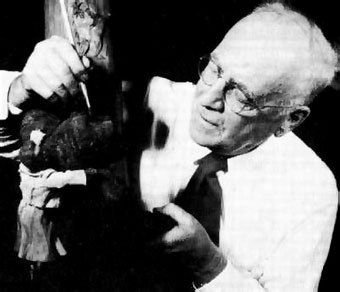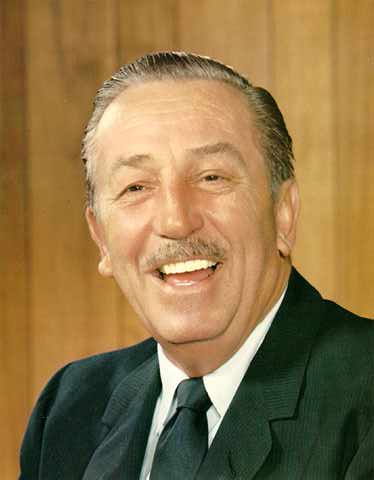1896:
A French film maker, Georges Melies, discovered the effects of frame to frame trickery and then subsequently used them afterwards.
1899:
The year with the first real use of stop motion, as Arthur Melbourne uses the technique on the commercial Matches: An Appeal.
1900:
James Stuart Blackton used stop motion to turn some sketches he had made into objects in an animation called Enchanted Drawings.
1906:
Blackton is credited as creating the world’s first cartoon called Humorous Phases of Funny Faces using chalk animation.
1911:
Winsor McCay creates an animation based on his comic strip ‘Little Nemo’. The animation was a collaboration between McCay and Blackwood and has since been heralded as a classic. Though it was never actually called ‘Little Nemo’, that is the name it has picked up over the years.
1914:
McCay continued his work on Frame by Frame animations by creating Gertie the dinosaur, while Willis O’Brien made a stop motion film about Cavemen. The very first Cartoon studio was opened in New York by Raoul Barre. These men could be considered the pioneers of early animation.
1918:
Winsor McCay created the harrowing retelling of ‘The Sinking of the Lusitania’ using various techniques he had learnt of the years. McCay used the animation to condemn the action and the people involved.
1919:
Otto Messmer created the cat ‘Felix’ under the name ‘Master Tom’ at the time. Felix could be considered as the first mainstream Cartoon icon.
1920:
Felix the Cat was the star of the world’s very first Colour animation. It was produced by John Randolph Bray.
1925:
Willis O’Brien created a set of stop motion dinosaurs to be used in the film ‘The Lost World’.
1928:
This year saw the release of Steam Boat Willie by Walt Disney. It featured synchronised sound and stared the character who would become the mascot for Disney: Mickey Mouse. Disney directed the film. The film premiered at New York’s 79th Street Theatre and was shown ahead of the movie ‘Gang War’
1930:
Betty Boop made her debut (albeit in a slightly different form) in the short ‘Dizzy Dishes’ by Grim Natwick who would later work for Disney.
1932:
Disney released the first Technicolor cartoon, ‘Flowers and Trees’
1933:
King Kong was released. The beast itself was created and animated by O’Brien. Kong was an outstanding marvel a time, with little of the audience having ever seen a creature of the magnitude or animation so seamlessly transitioning from live action and stop motion animation. It become a classic due to its longevity and how it began an entire movement in cinema
1937:
Disney released the first animated feature film ‘Snow White and the seven Dwarfs’. It was not only the first Disney feature but also the first American film, the first produced in full colour and the first made by Disney himself.
1940:
William Hanna and Joseph Barbera make the first Tom and Jerry Cartoon called ‘Puss gets the boot. Tom is called Jasper in this short.
1950:
Disney releases Cinderella to world eight years after its last feature. The very first TV animation was shown on American TV with limited movement.
1960:
Hanna and Barbera make the television debut of ‘The Flintstones’.
1966:
Walt Disney dies of Lung Cancer.
1978:
Water ship down and Lord of the Rings is adapted into animations. The second half of the Lord of the Rings movie was never made. Water ship down fast became a classic and was seen as a hit.
1986:
Influenced by Jan Svankmajer, the London-based Brothers Quay makes the grimy surrealist short Street of Crocodiles. John Lasseter begins his rise to fame as he directs Luxo Jr.
1988:
The Simpsons make their TV debut on the Tracy Ullman show. Who Framed Roger Rabbit was made by Richard Williams and was seen as a groundbreaking blend of live action and Animation.
1989:
Wallace and Gromit and debuted in there stop motion glory but lose out at the Oscars to Nick Parks other Creation ‘Creature Comforts’. The Simpsons earn themselves their own TV series, starting with a Christmas special.
1993:
Tim Burton produces the Musical Stop-Motion feature ‘The Nightmare before Christmas’. Steven Spielberg revolutionized special effects with Jurassic Park.
1995:
John Lasseter's Toy Story is the world's first feature-length CGI cartoon, heralding the biggest animation revolution since Steamboat Willie. Nick Park's The Wrong Trousers wins an Oscar.
1999:
The Matrix and its later sequels blur live action and animation in the presentation of the action (influenced by Japanese animation) and its continual digital manipulation of the image at the level of individual frames.
2000:
Aardman releases its first feature film, Chicken Run, in partnership with DreamWorks.
2002:
The Two Towers, the second part of Peter Jackson's Lord of the Rings trilogy, introduces Gollum, a CGI character whose movements and expressions are based on actor Andy Serkis.
2005:
The return of stop-motion, with Tim Burton's The Corpse Bride and Wallace and Gromit The Curse of the Were-Rabbit, by Nick Park and Steve Box. The latter wins an Oscar. Chicken Little, Disney's first in-house CGI film since Dinosaur, has a lukewarm reception.
2006:
Disney buys out Pixar animation
2009:
Avatar is released, bringing with it resurgence in 3D cinema and life like animations that can be brought to life with James Cameron’s new Technology.
Who’s who?
Winsor McCay
A French film maker, Georges Melies, discovered the effects of frame to frame trickery and then subsequently used them afterwards.
1899:
The year with the first real use of stop motion, as Arthur Melbourne uses the technique on the commercial Matches: An Appeal.
1900:
James Stuart Blackton used stop motion to turn some sketches he had made into objects in an animation called Enchanted Drawings.
1906:
Blackton is credited as creating the world’s first cartoon called Humorous Phases of Funny Faces using chalk animation.
1911:
Winsor McCay creates an animation based on his comic strip ‘Little Nemo’. The animation was a collaboration between McCay and Blackwood and has since been heralded as a classic. Though it was never actually called ‘Little Nemo’, that is the name it has picked up over the years.
1914:
McCay continued his work on Frame by Frame animations by creating Gertie the dinosaur, while Willis O’Brien made a stop motion film about Cavemen. The very first Cartoon studio was opened in New York by Raoul Barre. These men could be considered the pioneers of early animation.
1918:
Winsor McCay created the harrowing retelling of ‘The Sinking of the Lusitania’ using various techniques he had learnt of the years. McCay used the animation to condemn the action and the people involved.
1919:
Otto Messmer created the cat ‘Felix’ under the name ‘Master Tom’ at the time. Felix could be considered as the first mainstream Cartoon icon.
1920:
Felix the Cat was the star of the world’s very first Colour animation. It was produced by John Randolph Bray.
1925:
Willis O’Brien created a set of stop motion dinosaurs to be used in the film ‘The Lost World’.
1928:
This year saw the release of Steam Boat Willie by Walt Disney. It featured synchronised sound and stared the character who would become the mascot for Disney: Mickey Mouse. Disney directed the film. The film premiered at New York’s 79th Street Theatre and was shown ahead of the movie ‘Gang War’
1930:
Betty Boop made her debut (albeit in a slightly different form) in the short ‘Dizzy Dishes’ by Grim Natwick who would later work for Disney.
1932:
Disney released the first Technicolor cartoon, ‘Flowers and Trees’
1933:
King Kong was released. The beast itself was created and animated by O’Brien. Kong was an outstanding marvel a time, with little of the audience having ever seen a creature of the magnitude or animation so seamlessly transitioning from live action and stop motion animation. It become a classic due to its longevity and how it began an entire movement in cinema
1937:
Disney released the first animated feature film ‘Snow White and the seven Dwarfs’. It was not only the first Disney feature but also the first American film, the first produced in full colour and the first made by Disney himself.
1940:
William Hanna and Joseph Barbera make the first Tom and Jerry Cartoon called ‘Puss gets the boot. Tom is called Jasper in this short.
1950:
Disney releases Cinderella to world eight years after its last feature. The very first TV animation was shown on American TV with limited movement.
1960:
Hanna and Barbera make the television debut of ‘The Flintstones’.
1966:
Walt Disney dies of Lung Cancer.
1978:
Water ship down and Lord of the Rings is adapted into animations. The second half of the Lord of the Rings movie was never made. Water ship down fast became a classic and was seen as a hit.
1986:
Influenced by Jan Svankmajer, the London-based Brothers Quay makes the grimy surrealist short Street of Crocodiles. John Lasseter begins his rise to fame as he directs Luxo Jr.
1988:
The Simpsons make their TV debut on the Tracy Ullman show. Who Framed Roger Rabbit was made by Richard Williams and was seen as a groundbreaking blend of live action and Animation.
1989:
Wallace and Gromit and debuted in there stop motion glory but lose out at the Oscars to Nick Parks other Creation ‘Creature Comforts’. The Simpsons earn themselves their own TV series, starting with a Christmas special.
1993:
Tim Burton produces the Musical Stop-Motion feature ‘The Nightmare before Christmas’. Steven Spielberg revolutionized special effects with Jurassic Park.
1995:
John Lasseter's Toy Story is the world's first feature-length CGI cartoon, heralding the biggest animation revolution since Steamboat Willie. Nick Park's The Wrong Trousers wins an Oscar.
1999:
The Matrix and its later sequels blur live action and animation in the presentation of the action (influenced by Japanese animation) and its continual digital manipulation of the image at the level of individual frames.
2000:
Aardman releases its first feature film, Chicken Run, in partnership with DreamWorks.
2002:
The Two Towers, the second part of Peter Jackson's Lord of the Rings trilogy, introduces Gollum, a CGI character whose movements and expressions are based on actor Andy Serkis.
2005:
The return of stop-motion, with Tim Burton's The Corpse Bride and Wallace and Gromit The Curse of the Were-Rabbit, by Nick Park and Steve Box. The latter wins an Oscar. Chicken Little, Disney's first in-house CGI film since Dinosaur, has a lukewarm reception.
2006:
Disney buys out Pixar animation
2009:
Avatar is released, bringing with it resurgence in 3D cinema and life like animations that can be brought to life with James Cameron’s new Technology.
Who’s who?
Winsor McCay
 1867-1934
1867-1934McCay was a prolific animator that far outshone any of his rivals, and set the standard for Disney and others to follow. His most influential works are Little Nemo and Gertie the Dinosaur.
Willis O’Brien
 1886-1962
1886-1962O’Brien pioneered Stop motion Animation and perfected it to some degree. His works include King Kong.
Walt Disney:
 1901-1966
1901-1966Disney was an American film producer, director, screenwriter, voice actor, animator and entertainer. His is famous for his influence in the field of animation. It was due to Disney’s talent and dedication that he was able to found one of the most powerful companies in the world.
John Lasseter:
 1957-
1957-Lasseter is an American animator and Director. He oversees the Development at Pixar and Disney. Lasseter has worked on all the Pixar films to some degree, but the highlights would include Toy Story and Up.
Nick Park:
 1958-
1958-Park is an English Film maker and Stop Motion artist. Over his career, his has been nominated for 6 Oscars and won 4. His most notable creations are Wallace and Gromit.
James Cameron:
 1954-
1954-Cameron is a Canadian director, producer, screenwriter and editor. Cameron created 3-D Fusion Camera System that was used in his 2009 hit Avatar. Avatar was Cameron’s first feature film after Titanic. His most noticeable works are Titanic, Terminator and Avatar.

0 comments:
Post a Comment